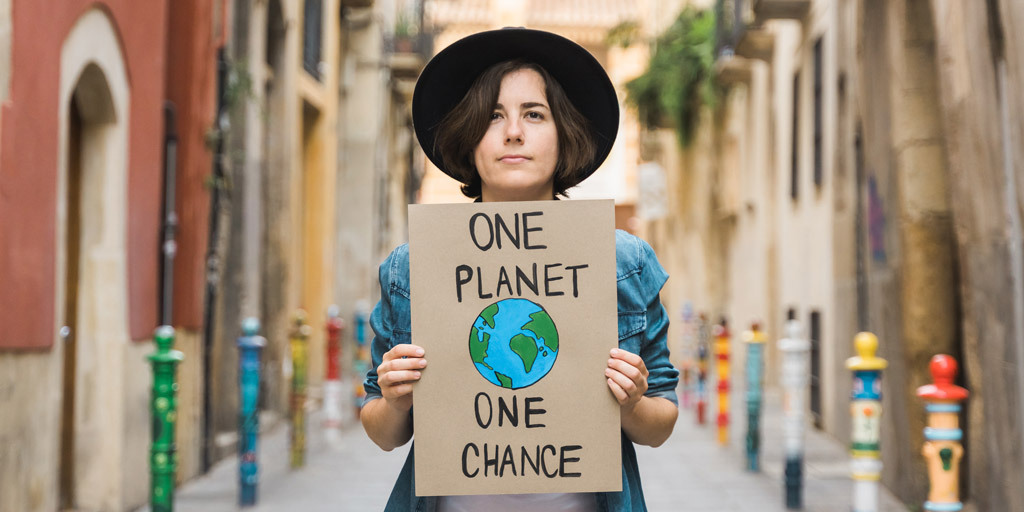A recent survey found that less than 20% of the world’s biggest retailers are on track to meet their eCommerce sustainability targets. The research concludes that retailers simply aren’t doing enough to reduce emissions and limit the rise in global temperatures.
Are brands too busy putting out fires to focus on the environmental toll of eCommerce? Is this why sustainability strides aren’t being made by retailers, both big and small?
We asked Andy Mulcahy, Strategy and Insight Director at IMRG for his thoughts.
Marginal gains
“Sustainability is always in the backseat,” he argues. ”No matter how urgent it may be, circumstances always conspire to trump it.”
‘’It couldn’t be the number one priority during the Brexit wranglings due to uncertainty, then there was a pandemic, then a supply chain crisis, then a war, now spikes in the cost of living. Who knows what might happen next but, unless there is a big climate event that really spooks people, it seems likely that it will never be able to quite get to the top of agendas. Cop26 seems to have had no impact at all.
‘’The primary problem is that it is seen as a business problem, for everyone to solve on their own. In reality even where a business has a major focus on it, they will only be able to make marginal gains. Making genuine progress requires businesses, even competitors, to find ways where they can work together to consolidate more, reduce van trips, remove packaging etc,” Mulcahy adds.
The intention-action gap
A huge issue when it comes to eCommerce sustainability is that both brands’ and consumers’ intentions and actions aren’t matching up. Since both are required to make sustainability work, we won’t see true movement until the gap starts to narrow.
Here’s an example – 97% of large retailers across the grocery, fashion, homeware and electronics believe that their company will capture value from sustainability over the next 5-10 years. Yet over half of them haven’t set key performance indicators for measuring their sustainability efforts.
So the intention is there, with brands feeling that sustainable changes are a solid investment. However, they don’t seem to measure whether or not it’s working, and set targets to shoot for, or milestones to gauge.
Then there are shoppers. 66% of global consumers say that they would be willing to pay more for sustainable products. Only 10% actually purchase sustainable products on a regular basis. It could be that consumers have the best of intentions and would ideally like to purchase more sustainable products. Yet because of habit, budget, or sheer inconvenience, they don’t always follow through.
Sustainability is complex, and requires a chain of cause and effect to be in play. When disruption occurs, true progress is halted. For example – it’s all well and good for a brand to switch to more sustainable shipping materials. If customers aren’t going to recycle or reuse them, it’s not affecting the bigger picture, right?
Delivery and eCommerce sustainability
Any online retailer will agree that in eCommerce, you encounter roadblocks on an all-too-regular basis. So it’s understandable that eCommerce sustainability has fallen down the pecking order in terms of priorities. Perhaps most businesses won’t ever be able to make it a top priority. But that doesn’t mean they shouldn’t try.
Small strides might be all that most retailers can manage right now, but that approach is better than nothing. The more changes that are made, the more likely that the intention-action gap will narrow. The good news is that we are seeing some major players take the lead in the quest to become greener. Carrier DPD offers customers a predictive 1-hour delivery window in a bid to reduce second deliveries, for example.
Giving customers more flexible delivery options at checkout so they can make more sustainable choices, has a big part to play. A massive amount of carbon waste is attributed to orders that don’t get delivered the first time. In 2021, failed deliveries contributed 355,987 tonnes of CO2 from UK delivery vans. Offering next-day deliveries, and alternative options like timed-delivery slots or local pickup, can help make the last mile greener.
Find out how Scurri helped fashion brand Everything5pounds increase conversions, half their delivery costs, and expand internationally. Download the case study here.
